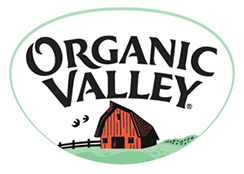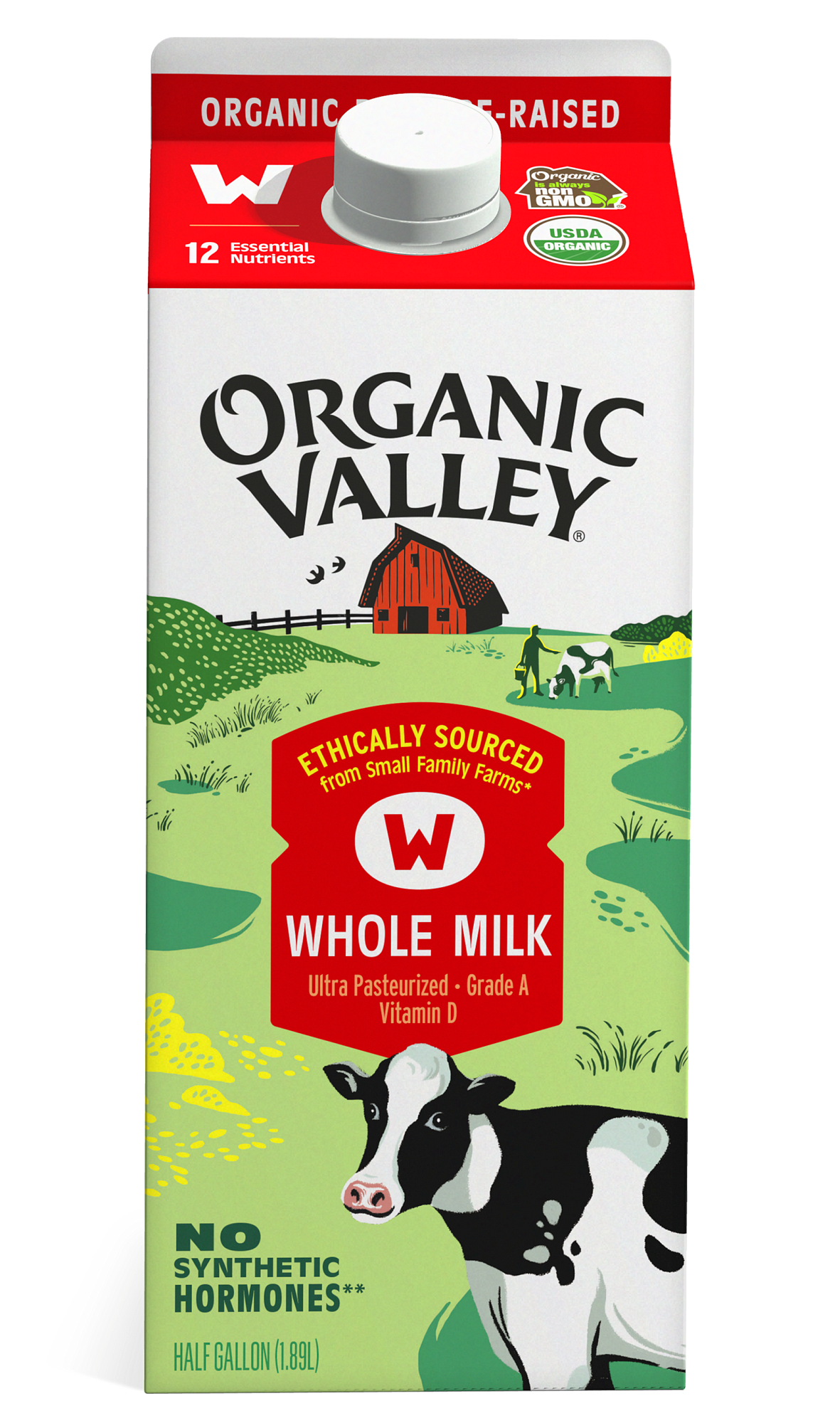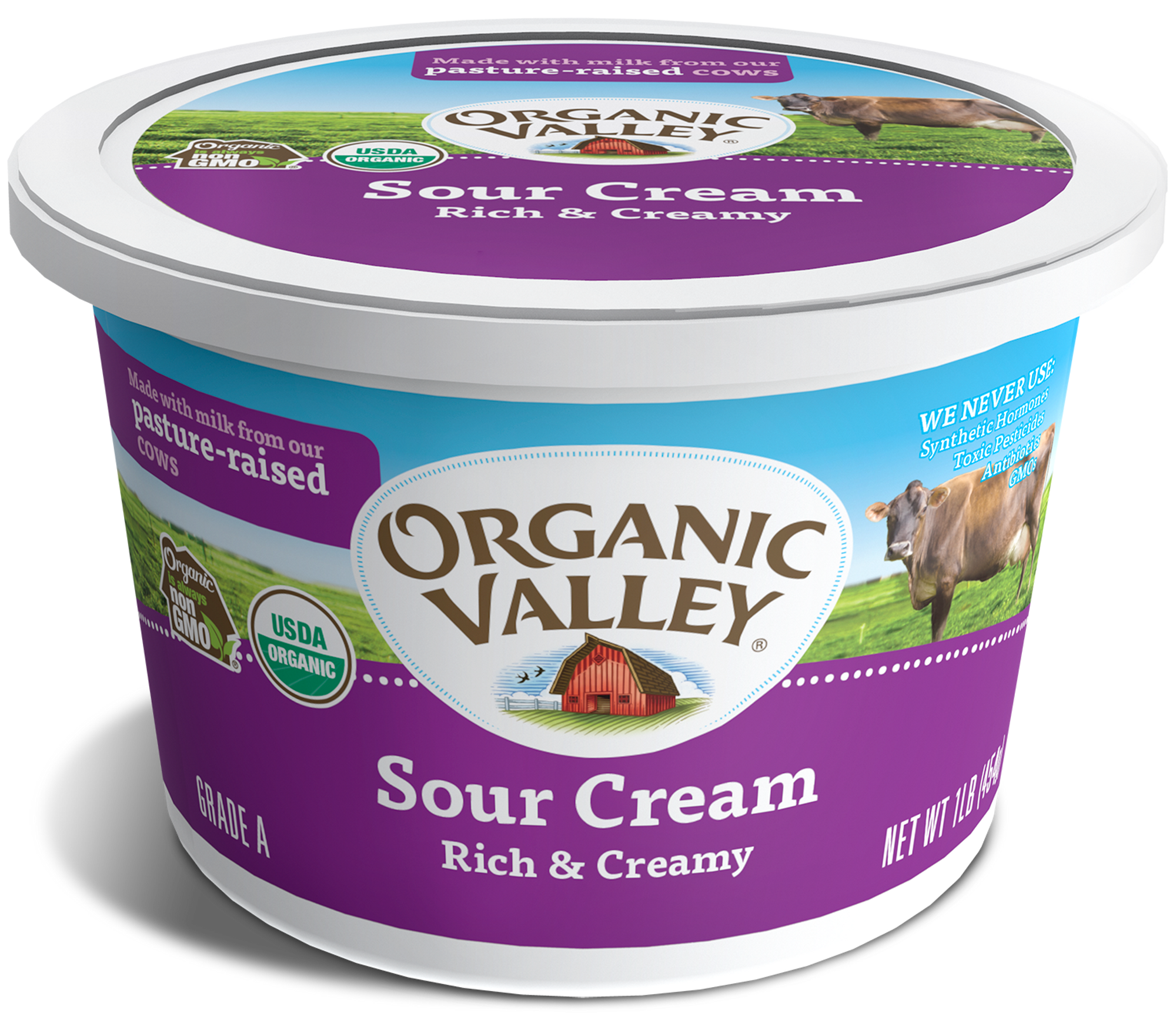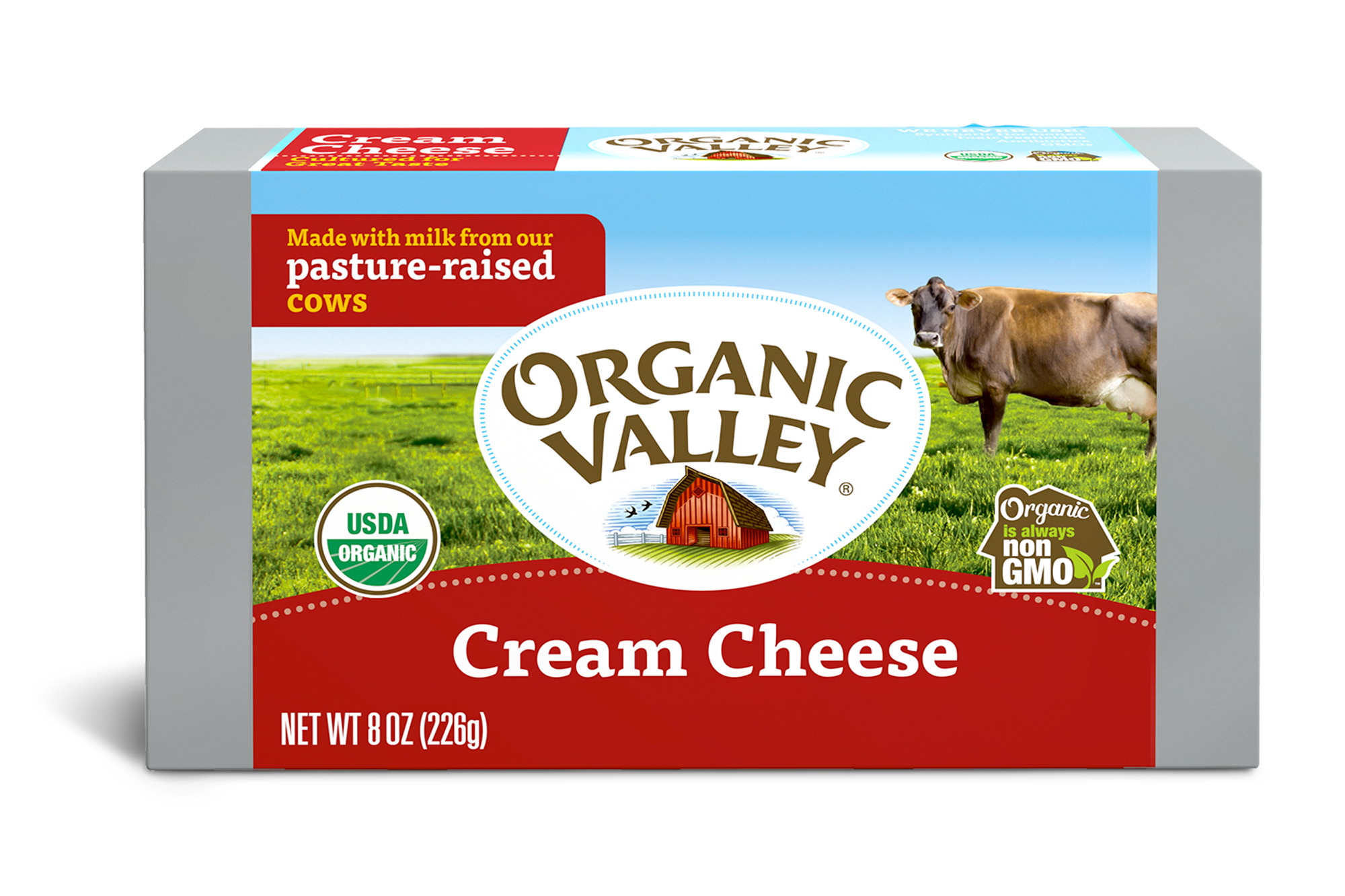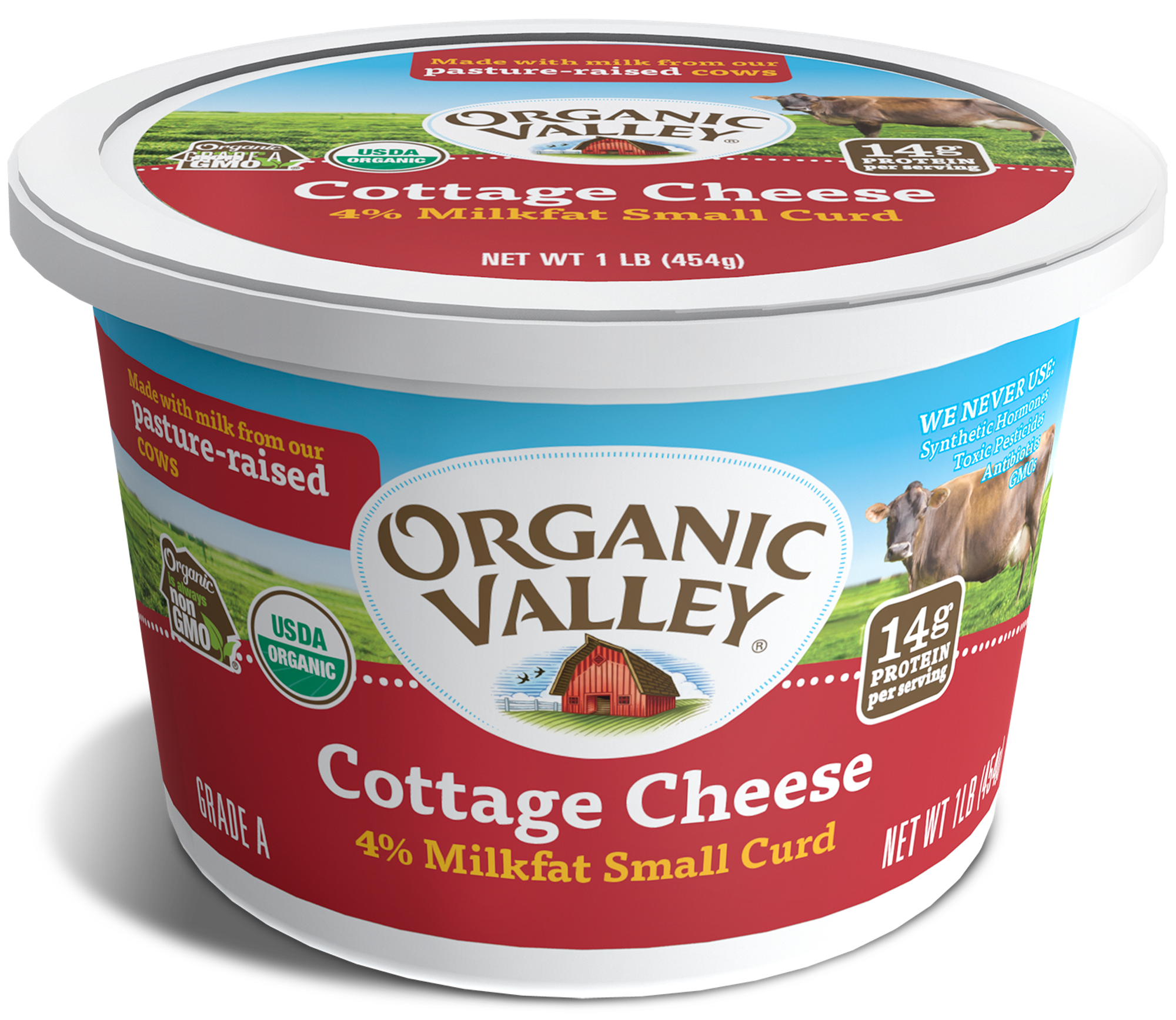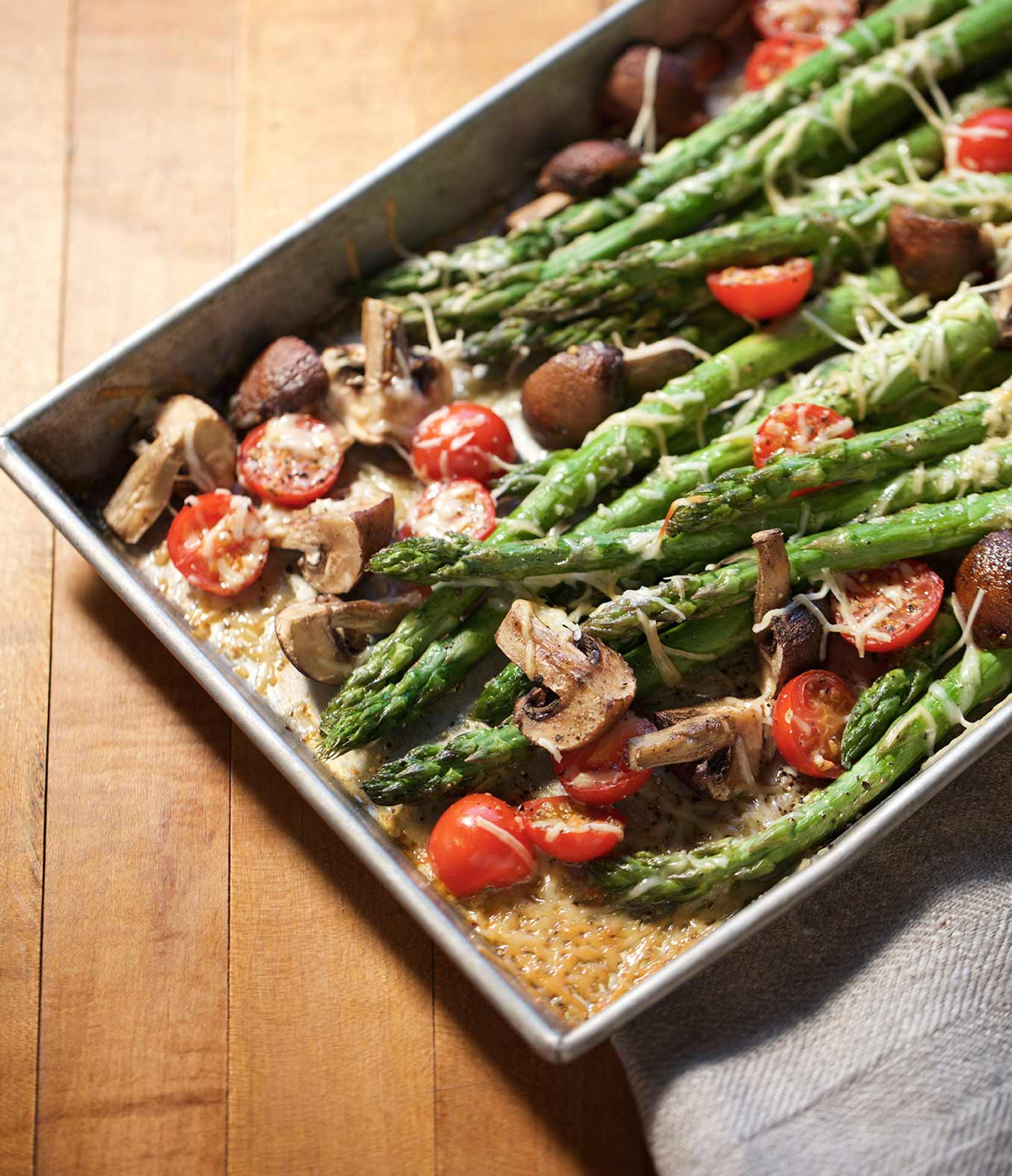
Food
Chef Luke Zahm of Driftless Cafe
Chef Luke Zahm has been called a sort of “Prodigal Chef.” He grew up in the Driftless Region of Southwest Wisconsin, moved around gaining important and transformative cooking experience, and finally decided to move back to the area, settling his family in the small town of Viroqua, Wisconsin (pop. 4,362).
The Driftless Cafe had been a farm-to-table fixture in the Viroqua community for years, and when it came up for sale, Luke and his wife, Ruthie, didn’t simply take ownership of the restaurant – they revitalized it. The Zahms are wholeheartedly committed to sourcing local food whenever possible and have developed deep relationships with a number of their source farms, which has turned this little cafe into a hub for the area’s local food movement and food culture. For the Zahms’ hard work, Driftless Cafe has been featured on the Emmy-nominated Wisconsin Foodie TV series, received Edible Madison 2014 and 2016 Local Hero Awards in the Chef/Restaurant category, and received a Wisconsin Economic Development Corporation “Main Street Makeover” grant in 2015, which they used to expand into the vacant space next door and create a lounge bar. UPDATE 5/9/17: Luke’s work was recognized at the national level in 2017 when we was nominated for a James Beard Award for Best Chef Midwest. These awards are one of the highest honors for chefs in the United States, and to be nominated is incredible recognition for this small-town restaurant.
Chef Luke’s passion for local and sustainable food is evident in everything he does. We’ll let you hear for yourself – enjoy!
Welcome to Rootstock Radio. Join us as host Theresa Marquez talks to leaders from the Good Food movement about food, farming, and our global future. Rootstock Radio—propagating a healthy planet. Now, here’s host Theresa Marquez.
THERESA MARQUEZ: Hello, listeners. You are in for a treat today, because we are speaking with Luke Zahm. He is the owner and chef of the locavore haven in Viroqua, Wisconsin, the Driftless Café. The café is located in the Driftless Region, so named for its unique carved hollows and rolling ridges, the result of having escaped three glacial periods. It is inhabited today by the largest number of organic farms of any county in the United States. Please join me in welcoming Luke Zahm.
(1:21)
We are so delighted to have Luke Zahm here today. And if I were to try and describe Luke, I would call him our local Kickapoo hero. Luke, whenever I go to a phenomenally wonderful restaurant like the Driftless Café, which Luke is both owner and head chef, I think of my mother. And I think of you as my mother, and I know that you’re going to be nurturing and feeding me this beautiful food. So right off the bat, I want to thank you for all these great meals I’ve had at the Driftless—
LUKE ZAHM: That’s really nice—thank you!
TM: Never a disappointment, and always just a delight. You are from this region, and you went away from the region and became a food lover, a chef, maybe even a food activist. Tell us about your journey.
LZ: Sure. So you’re right, and thank you—those accolades are so kind. It’s so kind, specifically from people who are passionate and care about food and where it comes from. It’s a huge motivation for why we do what we do.
I was—I was born in La Farge. I was born right outside of town. And we grew up poor. We grew up with a garden, and my dad had to hunt because my parents were working and there wasn’t a lot of money. And so, coming from that place, that’s where I started to develop a little bit of a connection with food—having a garden, being able to put your hands in the dirt, being able to understand that that’s where food comes from, and seeing it being cultivated all around you, because Vernon County has long been an agricultural community.
Leaving was an important part of the journey. And I can remember as a child in the area, or a teenager moreover, feeling extremely frustrated. There wasn’t a ton of the world happening in Vernon County or the Kickapoo Valley…
TM: (laughing) That’s a nice way to say it!
LZ: Exactly!
TM: Well, it’s only 700 people.
LZ: It’s only 775 people. And I knew that I had to leave this place. My parents were great about, as we got older, taking us to Minneapolis, taking us to Chicago, showing us the world, and making sure that we got to taste a little bit of it too. It was important.
I will say, I left when I was eighteen and I moved to Chicago. I was living in Wicker Park. And one of the days when I was feeling the most homesick, I went to Whole Foods to do a little grocery shopping. And I saw, for the first time outside of La Farge, an Organic Valley cheese display. And I was overwhelmed by, number one, seeing it, because being from La Farge, you basically grew up with this idea and this identity that nobody knows where you are, nobody knows where you’re from. You can talk about it all you want, and you say it’s close to La Crosse, and people are like, “Where’s La Crosse?” and then it’s “Somewhere between Madison and Minneapolis?” “Well, I guess maybe it’s Chicago and Minneapolis.” It’s insignificant.
But that day, when I saw that, I literally walked over to the set and I grabbed a package of cheese, and I showed my roommates on the back, and it said, “La Farge, Wisconsin.” And honestly, that was one of the first times in my entire life that I felt a sense of pride in being from that place. I remember feeling it and saying out loud that these are my people; this is part of who I am. And that feeling resonated with me very, very strongly. It resonated to the point where I needed to, I wanted to get out of Chicago. There was far too much concrete for a kid from La Farge. And I ended up in Madison.
And in Madison, we saw a little bit more of the local, regional, organic food coming into the city through the Dane County Farmers Market, which I think geographically is one of the largest farmers markets in the United States. It’s a huge, huge event to go down there on Saturday mornings, and you develop this sense of connection. Well, I started to notice that, man, there’s a lot of farms coming out of western Wisconsin.
Around that time I was really starting to question my own life plans of what was I going to be? Who am I? And I realized that that connection to food and to farming was significant. So I finished my degree at University of Wisconsin and almost immediately thereafter dedicated my life to becoming a chef.
(6:38)
So I worked through three or four restaurants in Madison, coming up, and then I got a call one day from a recruiter at Epic Systems, the medical records software company in Verona, Wisconsin. And they talked to me about this idea that they had to start a culinary program for their employees. It was supposed to start as a relatively small-scale production, which for them meant about 150 lunches a day. I was like, okay, I think we can do 150—that’s easy to kind of digest in my head. And so I was hired.
And I walked in, and the first day that I was there, they hadn’t finished my dining building yet. When I say “dining building” I mean it is an entire dining building. So I got to walk into the kitchen, and it was a 10,000-square-foot kitchen, all fitted out state-of-the-art. There were three of us that were hired at the same time, and we all looked at each other and said, “This is gonna get nuts!” We could see the writing on the wall.
So over the course of a few years, we built that dining program into one that was feeding about 3,000 people a day—from scratch.
TM: Fantastic!
LZ: Yeah, it was humongous. And the menu had to change every single day, so it kept us fresh, it kept us learning. And I learned so much about different cuisines, different cultures, different food identities that I had never been exposed to before, almost by sheer necessity.
It was at that point, though, that I started to become a little more disillusioned with what I was doing as a chef. I was spending all my time writing recipes, calculating nutrition for the recipes that we were creating, and managing people. And I had the experience at one point of trying to get more local farmers involved in what we were doing. And I was introduced to this very lovely, sweet couple who were farmers, actually here in Viroqua. But they had to be part-time farmers—they both had second jobs, because they couldn’t afford to stay at home and farm. And they had a little baby boy, and they came to Epic to meet me and asked if I might consider finding a way to create a CSA, a community-supported agriculture, drop site at Epic. And so I took it to Judy, the CEO and founder of Epic, and I said, “I want this—I’m super passionate about this. I think this is a good thing for your employees and their health.” And she said okay.
So we opened up the registration, and the first year over 85 full CSA shares were purchased. So that meant that both farmers could quit their secondary jobs and just be farmers. That’s Mat and Cate Eddy, from Ridgeland Harvest. That was the first time I felt personally the transformative effect of being able to purchase local and seeing the impact that that can have on one family specifically, and how important that is. And it was kind of the renaissance of my desire to cook again and desire to be involved in this at all costs. That’s where I started to maybe cross the line into a little bit more of a food activist.
So one of my other jobs for Epic was to go and recruit. And I was on a recruiting trip in the Hudson River Valley in upstate New York, at the Culinary Institute of America. We were trying to bring chefs in to be able to stock our kitchens because we knew we had to build more dining buildings with more restaurants and more food accessibility for our employees. And I had been talking all day next to Bobby Flay’s people, next to Mario Batali’s people, next to, you know, hotels and lodges all over the United States, trying to get people to come and work at this software company, and trying to explain to them why Wisconsin was important. Why is it important? And I don’t think that, after an entire day, that I felt like, you know, maybe this is kind of a pipe dream. I’m not sure that I’m really resonating with any of these kids.
And I went and dined in the restaurant that is the flagship restaurant for the Culinary Institute of America. It’s called American Bounty. And on the first page of the restaurant menu, I looked at the ingredients, and they list all their sourcing. And four ingredients were from this region.
TM: Yes!
LZ: They had two from Harmony Valley, they had a cream from Organic Valley, and then they also had Andy Hatch’s Pleasant Ridge Reserve. And that is when the lightbulb went off. I mean, it literally blew up that this is all happening in my home. This is coming out of my backyard. And we could see, when we were in Madison, the tide kind of starting to change in this small farming community that is Viroqua. A lot more people were moving in, a lot of people were seeing it through a different lens all of a sudden. It was starting to get a little bit more press; it was getting accolades for being one of the most unique small towns in America. And that, for us, was…it was beckoning. It was constantly drawing me out of the city: Come home, come home.
So we came home. We came home. And we put together a few different ideas how we wanted a restaurant to look and feel, what we wanted it to be. And the Driftless Café, more or less maybe by fate, fell into our lap.
(12:34)
So now we have this restaurant. We’ve had to expand it—it’s been fantastic. Vernon County has over 180 small organic farms. It’s one of the highest concentrations in the United States.
TM: It is actually the highest concentration of organic farms of any county in the United States.
LZ: These 188 organic farmers we have on our board. We literally have probably 60 names of farms that we purchase our food from. You know, and there are farms that we’re pulling stuff from that don’t even make the board. It takes a while to make it, only because there are so many that we get from. When we’re doing this—
TM: “The board” is your list of the farmers.
LZ: Yes, yes. Yes, thank you. So we have three now, three full chalkboards that show our sourcing, and it is the most rewarding piece of the café for us. We’re really meticulous about tracking the amount of money that we spend on small family farms. Last year, with 44 seats in the restaurant, we put, it was really close to $100,000 back into small family farms, the majority of those being in Vernon County, a few outliers in Crawford County, Richland County, Monroe County.
TM: It’s okay, you can probably go to Iowa too and we’d be okay.
LZ: Yeah, exactly! Well, I have one farmer in Iowa, and I tell them all the time that they’re imports. You know, this is exotic for us. But it is the most rewarding to see that money go to work in our community. And for us, when the farmers come in, those are the rock stars. Those are the people that really propel us to keep pushing, to keep pushing the food, to keep pushing the idea and the mission of the restaurant, which is to be a vehicle for this community’s growth, and a bridge in this community as well—to unite people, to create a space where they can come and celebrate what’s happening here.
And when I get food at the restaurant, the hard work is already done. I’m literally, I’m putting it together with a few other beautiful pieces that I’ve received, or we’re trying to create a painting or a mosaic. But most of the hard work has been done by the farmers. So this is kind of my celebration to them. Having grandparents who both grew up as farmers, and my dad grew up on a dairy farm, I know how much labor. And it’s a labor of love, and it’s a lifestyle choice to be able to farm. And I want to celebrate them every day on every menu. There’s so much good stuff happening here, so much being produced. If it’s Organic Valley or Kickapoo Coffee or Wisco Pop—all those pieces tie in to create this beautiful fabric that’s the Café.
TM: And once again, it is a beautiful, wonderful community space. And while you’re there, eating, you know that you’re also giving tribute to the people who aren’t there—that is, the farmers. And so thank you for that.
But you know, people always ask this question: Where will you make a compromise?
LZ: Where will I make a compromise? Getting good seafood in. I used to listen to my parents—not that they had like a huge baseline for amazing seafood—but talk about a place where we just want to be able to go and get a good piece of fish. Where can we go and get a good piece of fish? Because it didn’t exist here in the 1970s, 1980s, 1990s, for the most part.
So seafood has been a place where we decided early on that we would bring in fish on Fridays and Saturday nights at the Café, and at first—
TM: Heavens, you can’t have a restaurant in Wisconsin without having a Friday fish.
LZ: Friday fish, exactly—it’s part of the tradition here. So we really, at first, we were looking at the majority of the conventional sourcing. And you can get fish brought in, you can get it shipped in from Milwaukee or Minneapolis or Chicago. And we started paying attention to that.
But as part of the Chef Action Network, which is a DC lobbying group, they started turning on the James Beard Award winners to sustainable seafood, so Sea To Table, which allows chefs like me and other chefs in the Madison area, we can buy case lots and share case lots together.
TM: Excellent!
LZ: So it goes from single-origin fishermen back to these restaurants, and we can know the identity of these fishing fleets, we know where it’s pulled out of. We know that these are fleets that are catching fish to feed their family, not massively trolling the ocean to take up whatever they can get in their nets and then selling us whatever’s valuable. That’s one of the areas where a compromise comes in. You know, you start driving towards that, and you start pushing at it slowly, and that’s a really beautiful thing.
The other thing that’s really popping up here in the Midwest are aquaponics. And there’s actually a formerly conventional chicken farm outside of Des Moines, Iowa, that realized that they were going to have to put a bunch of money into trying to restructure their farm and their farming operation if they wanted to stay competitive in the conventional market. And they saw something about aquaponics, and they realized that they had almost the perfect setup and the structure already in place. So now they’re producing, it’s the first of its kind—it’s Iowa-raised barramundi. It’s like an Australian sea bass—
TM: Excellent.
LZ: But they’re finding new ways to innovate and make that happen. Which means, for me, if I buy salmon from Sitka Salmon, which is located in Sitka, Alaska, they barge it down, they buy carbon offsets, they do all these things to make sure that it’s a sustainable product. And, you know, the people along the chain get their due regard. I love when our friends and neighbors, when people take on this ingenuity for themselves. They see the niche in the market and they go after it.
We have a farm in Seneca, which is about 25, 30 minutes from here, that’s growing Atlantic salmon for us, and it’s wonderful. We can—
TM: So Atlantic salmon isn’t from [the] Atlantic—it’s a variety.
LZ: It’s a variety. It’s a variety, and they have a spring, actually, on their farm that puts out like 300 gallons of water per minute, so it’s just constantly flowing. It allows the fish to grow in these tanks. They have them intermixed with trout, and it allows us to be able to buy stuff that is still local, it’s sustainable, and it continues to support the mission of the restaurant.
TM: And it’s delicious!
LZ: And it’s delicious—yeah, the trifecta.
TM: That’s a pretty great story.
(19:31)
I guess the idea of fish—I’ve been reading and I’d like to ask you this question, now that you mentioned fish: that we should be starting to eat more…how do they describe it…scrappy white fish or, you know, fish that people generally see as throwaway fish, and that a lot of chefs are starting to bring that fish in because it’s a way of trying to respect the ocean and its balance and its diversity. Any thoughts on that?
LZ: Well, actually, we’ve tried to look a little bit further than that. One of my friends, a colleague from Milwaukee, has started putting on their menu the Asian carp, because they can be pulled out. And the idea of the conversations that we’ve had is this invasive species is most certainly coming into the upper Midwest; it’s affecting our waterways, it’s affecting the ecology of the rivers, lakes, streams that they get into. The only way, really, to try and curb some of that is to create a commercial market for it. And let’s see if we can take some out of there so some of that money can maybe, hopefully, be spent on improving the habitat and eradicating them in the future. But we really believe strongly in that.
I believe strongly, also, like the Lake Superior or Lake Michigan whitefish, things that we can get out of there—some of the rough fish. If it’s the chubs, they can be smoked. I get a lot of catfish from a sustainable catfish farm in Missouri, which is great. I’m really into those pieces and styles, specifically for the different clienteles, the lunch clientele, because it gives me a versatile tool, it’s a lower price point, and it’s still really good. But it’s good with a mission, so to speak.
TM: So that fish sandwich I had a couple days ago for lunch, was that like catfish from Mississippi?
LZ: That was Missouri, yeah.
TM: Uh, Missouri, excuse me. It was delicious.
LZ: Good, good! You know, that’s super fun. We take a little bit of our own house-made lacto-fermented vegetables, we throw some chipotle aioli on there, and it’s our, the Driftless Café po’boy, which is fun.
TM: Yeah, on a wonderful ciabatta?
LZ: Yeah, exactly!
TM: I’ve been meaning to ask you, do you do that? Do you make that at the Driftless?
LZ: We make some of our bread there. Bread is one of those programs that, it becomes super labor-intensive, and a lot of times for very little reward. It’s usually something that goes out with a sandwich—
TM: Mmhmm, and it takes a lot of space.
LZ: Oh, it takes a ton of space! So we actually have, someone in the pipeline’s coming in to start doing that for us—do a little bit more of the baguette pieces. But we, uh…a little insider secret…we do a lot. We have about six or seven different uses for our pizza dough. We make it as a yeasted dough; we let some of it ferment; we let some of it go sour. You know, we find different ways to cultivate one product into multiple products. And that, for us, is super rewarding, and it feels a little tricky too.
TM: Well, you know, going back to this idea of what’s in season, and you know, how you do have to make compromises. And of course, one of the compromises, I’m assuming, happens in the wintertime—although I’ve been impressed how some of our local farmers are starting to do some winter greens in their greenhouses. I was wondering, are you able to get some local greens in the wintertime, and other local things, or are you having to dive down and get things from California?
LZ: That’s a really good question. This year was the first year, I think the only…we had like a two-week gap in continuity, where I couldn’t get locally produced greens.
TM: Two weeks?! That’s fantastic!
LZ: Two weeks—exactly, exactly. We love it when we see almost zero boxes of the Cali organic spring mix in the cooler. It’s such a joy for us. The USDA over the past five years has released a lot of grants for small farms to put up hoop houses and greenhouses. One of the recipients of these grants, we kind of lovingly refer to them as the Amish Mafia. They are a group of families outside of Mount Hope, Wisconsin, which is located by Fennimore. And this gentleman calls and—he’ll call, and I’ll actually get three phone calls on Monday from the same TracFone, which is plugged into a light pole on the ridge. If it’s gnarly and it’s the middle of winter, you will hear the wind howling and you can barely hear him.
But Jacob Stoltzfus, his English is broken at best, he’ll get on the phone and, “Hi, Luke, this is Jacob.” He always has the most inopportune moment to call. If it’s in the middle of dinner service or if it’s at six a.m., whenever he’s by the light pole, he’s going to give me a jingle. And, “I have the greens for you. How many would you like?”
And so we’ll be like, “Well, Jacob, I don’t know—do you have twenty pounds? Can we get twenty pounds?”
“I have a hundred and twenty pounds.”
“I just need twenty. Don’t show up with a hundred and twenty pounds!”
But we were able this winter to actually, he had such a surplus that we hooked up another restaurant in La Crosse, The Mint.
TM: Wonderful.
LZ: And we housed the greens for them until they could get from La Crosse to Viroqua, and sent them back up in the pipeline. So that way his product was being used, [and] we were able to kind of cut that piece out entirely for the region, or at least in two restaurants in the region, which feels like you’re making a difference.
They have, the Stoltzfus farm, very innovative: they have a sawmill on premise, as a lot of Amish communities do. And so they developed their greenhouses to burn sawdust so they could fire the greenhouses with the sawdust-fired stove, and they stay warm all winter. And we stay in greens.
The other fun part for us is taking all those root vegetables that you get so sick of in the wintertime, and lacto-fermenting and pickling them. We save a freezer at the Café just for chilies that we’ll buy, usually from Driftless Organics or other small farmers here, and that allows us to pull… Chilies freeze really well. We’re able to pull a couple out, throw it in with the different pickling solutions, and you can do rutabagas six or seven different ways.
(26:10)
TM: Well, you know, that is so…that’s something I love about the Driftless as well, and that’s the pickled vegies—something to look forward to. And also, I would call you a pioneer there. That is now becoming the rage. While I was in Portland last month I walked into several restaurants where there were giant gallons of beautiful fruits and vegies, all being pickled on different shelves high above and incorporated into the dishes. So there’s a wonderful, healthful benefit, isn’t there?
LZ: Absolutely. Lacto-fermented foods, they’re great for your enzymes and your flora, the stomach flora. They are really high and nutrient-dense most of the time. So we love being able to sneak it on there. And it’s just a really unique way to look at food from a completely different lens.
TM: Yeah, and you’re preserving it. And so, in a way, you can say it’s “in season.”
LZ: In season, exactly, exactly!
TM: So what a wonderful format you have there—
LZ: Well, thanks!
TM: —with local food, this pickled delicious healthful food. Like I said, when I go in, I feel like you’re my mom—
LZ: Oh, that’s great!
TM: —and that you’re taking care of me as well as my mom did.
LZ: Well, I think that’s kind of the basis for the whole movement. Organic farming is farming like your grandparents farmed, you know, free of chemicals. And I think part of the connection to the food at a place like the Café and like a lot of restaurants are starting to model is this connection to maybe a different time, something that was a little more simple. And through technology or through sharing that resource, we’re able to create a better product in the end and still have all the soul that’s involved in the creation process.
TM: Well, I think those of you out there listening, if you don’t think that you can change the world by the way you eat, I think perhaps Luke may have convinced you otherwise. We better put your restaurant forward as the Midwest James Beard, the next James Beard Award.
LZ: We’re trying—2017! You know, not to give it away, but it takes a few years to ramp up to this type of thing.
TM: Thank you so much, Luke, for taking some time out of your cooking schedule this morning and coming over here. It’s a real honor, a real pleasure to talk with you.
LZ: Oh, thank you for being a tireless advocate for what’s happening here and for my region and my hometown.
(28:32)
How about that Luke? His passion for local and organic is so rooted in this beautiful Driftless Region. If you’re lucky enough to visit, best stop at Driftless Café for his delicious food, filled with love. I may see you there.
Rootstock Radio is brought to you by Organic Valley Family of Farms.
